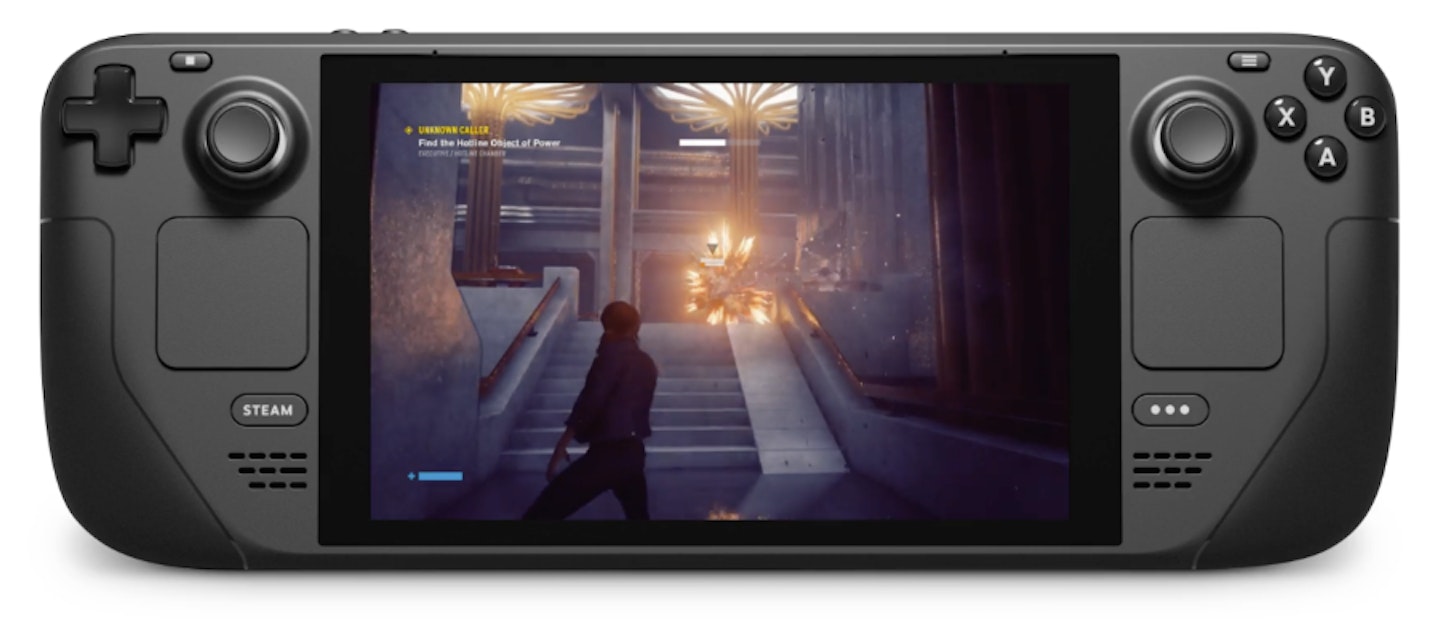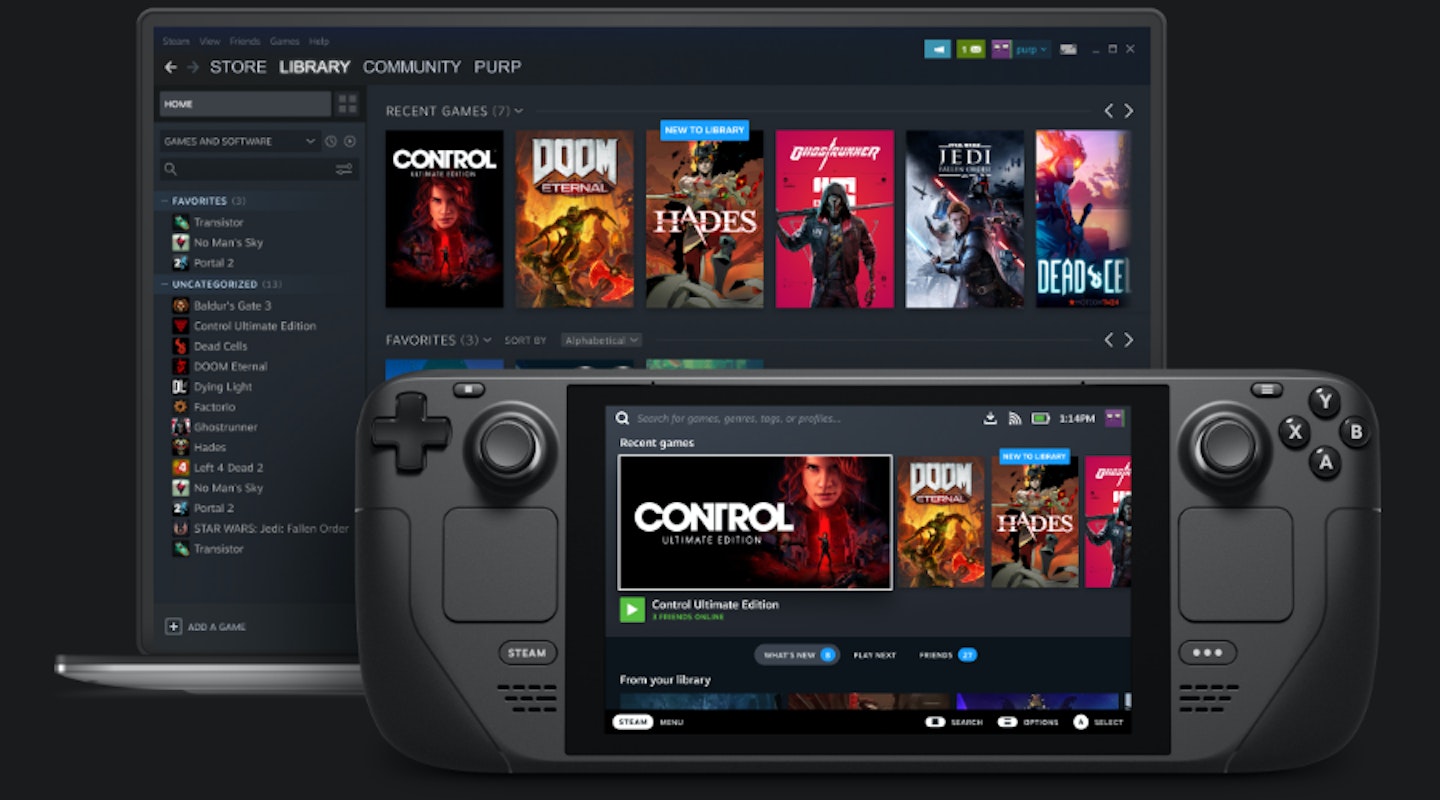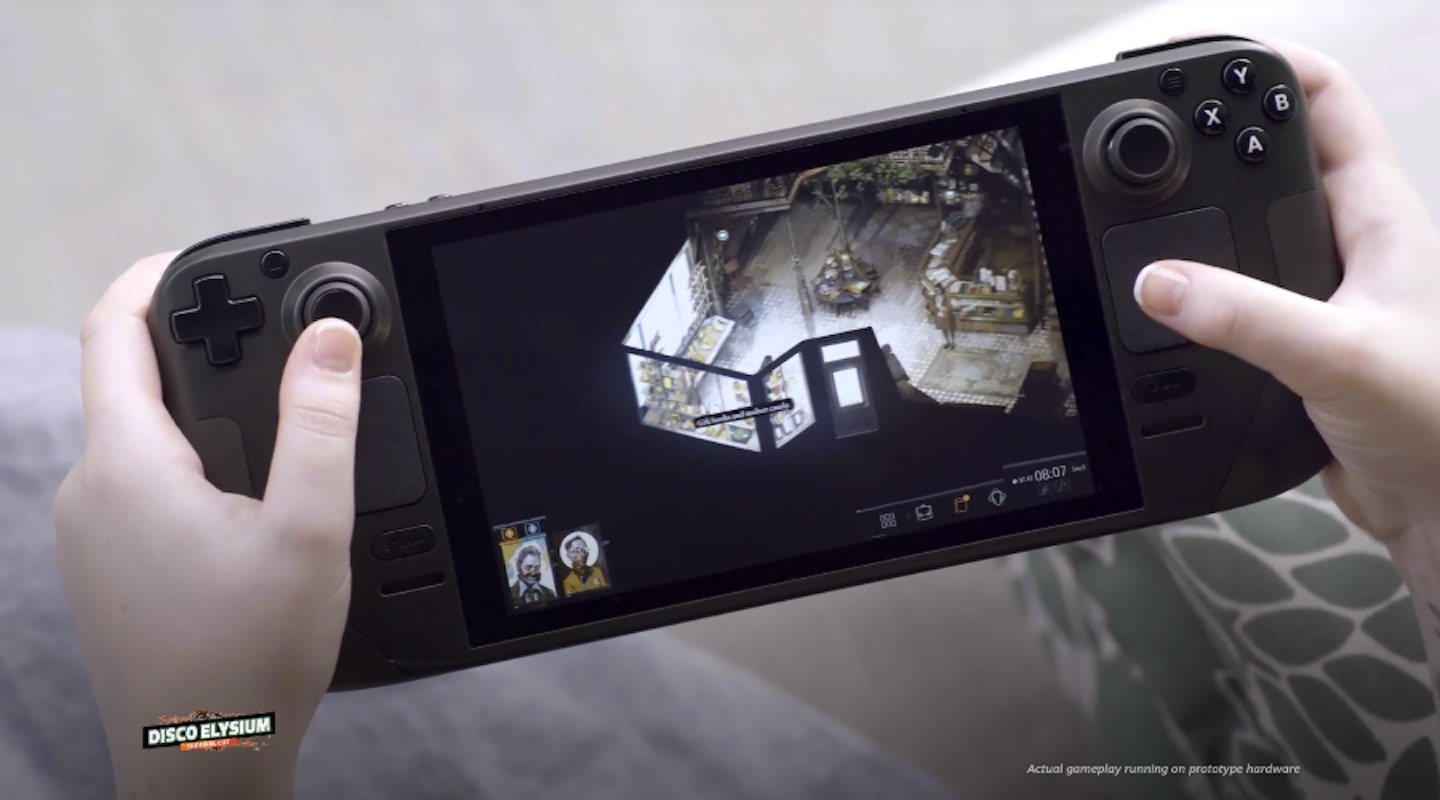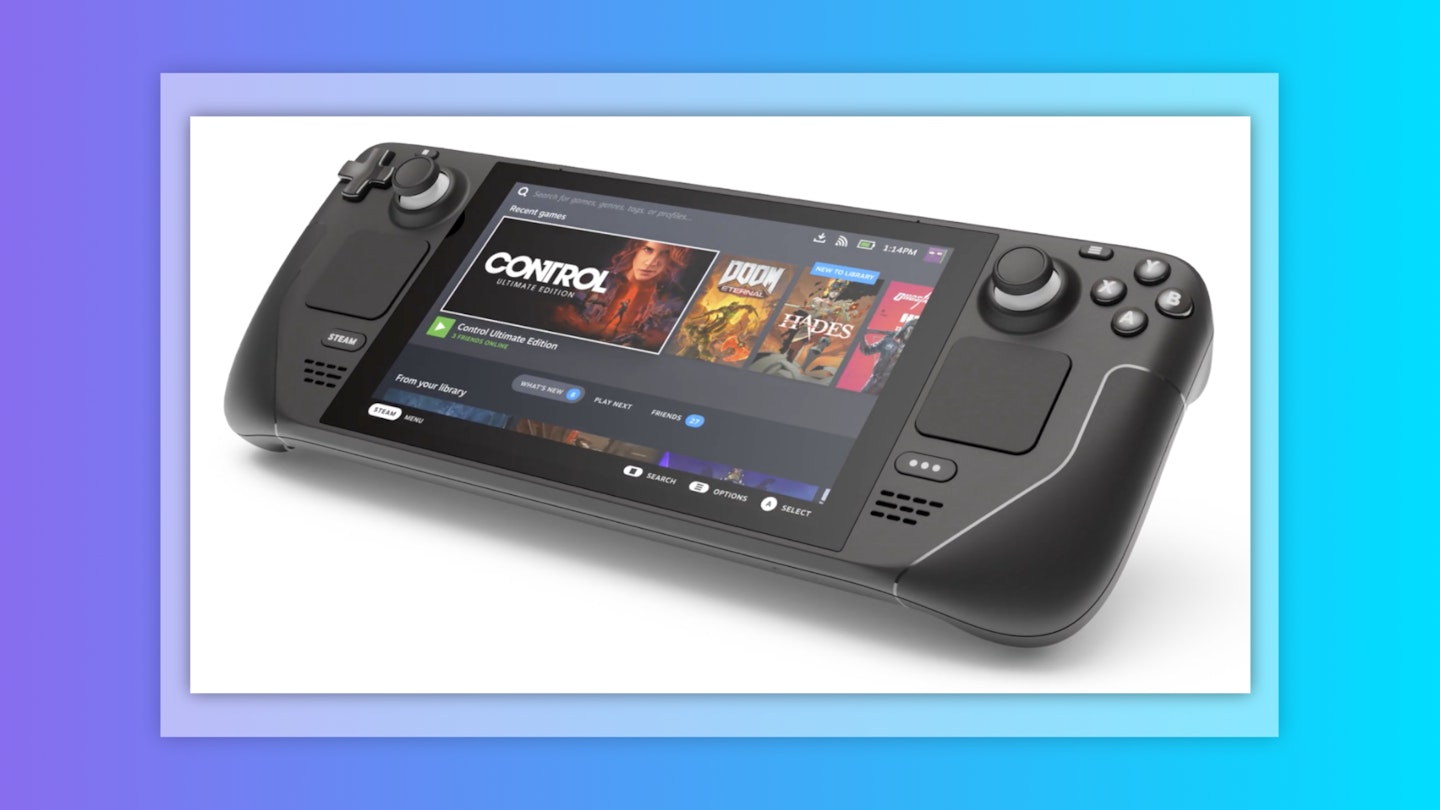The Steam Deck is a new handheld gaming device from Valve, and it will be launching in December 2021. Prices start from £349.
According to recent reports, the Steam Deck is much more powerful than we originally thought. Valve has confirmed that the device will feature a bandwidth of 88 GB/s as well as a quad-channel 32-bit LPDDR5 memory. It additionally won't be limited to 30Hz as previously thought, this will instead be the targeted minimum.
While preorders aren’t live yet, you can pay a deposit for a reservation, with “order invitations” being sent at a later date. However, Valve notes that not all reservations can guarantee a device at launch.
If a user is lucky enough to secure a device, the date that this will be received is a little of a mystery. Though Valve states that “units will begin shipping in December 2021”, the expected order availability is claimed to be between Q1 and Q3, 2022, depending on the version.
Though the reservation page initially struggled under the weight of keen would-be owners, the page is now much more stable. Costing $5, a reservation is an email alert system, letting users know when inventory is available to them. The $5 will count towards the overall price of the console and can be refunded if cancelled.

Steam Deck prices:
Steam Deck with 64GB eMMC- £349
Steam Deck with 256GB NVMe SSD - £459
Steam Deck with 512GB NVMe SSD - £569
The Steam Deck will launch with a huge catalogue of games. Courtesy of its SteamOS, players will have access to any game from the Steam Library. In currently promotional materials, we see the Steam Deck running Control, Hades and Disco Elysium. Jedi: The Fallen Order and Doom Eternal can also be seen on the SteamOS interface.

Related: The best PC games | The best sci-fi games
In terms of hardware, the console has a seven-inch screen LCD (the same size as the recently announced Switch OLED model, a tad bigger than the standard Switch), with a resolution of 1280x800 and 60Hz refresh rate. There are face buttons, analogue triggers, bumpers, and assignable grip buttons. There’s a d-pad, two capacitive touch analogue sticks, two trackpads and gyroscopic controls. Valve seems to have confidence in the quality and ergonomics of these controls, highlighting how the Steam Deck “was built for extended play sessions - whether you’re using thumbsticks or trackpads”.
The Steam Deck also has a built-in mic for multiplayer gaming and Bluetooth 5.0 support. It weighs around 669g, which is about 250g heavier than a Nintendo Switch.
A dock for the Steam Deck is also on the horizon, though there is little information available. What we know so far does make it sound similar to the Switch TV dock. Valve says the dock will prop up the console while “connecting to external displays, wired networking, USB peripherals, and power.” In an interview with IGN, Valve claimed that the Steam Deck should be compatible with any third-party USB-C dock.
PC power in your hands

In its announcement, Valve reveals that it has partnered with AMD to create the Steam Deck. The handheld has an AMD APU specially optimised for portable gaming. In its announcement, Valve describes the APU as a “2 + RDNA 2 powerhouse, delivering more than enough performance to run the latest AAA games in a very efficient power envelope”.
The Steam Deck also has 8 RDNA 2 CUs GPU (1-1.5GHz, up to 1.6TFlops FP32) and 16GB DDR5 RAM. There are three variants available, all offering the same power performance but carry different storage capacities: 64GB eMMC, 256GB NVMe and 512GB NVMe. All versions are expandable via microSD.
There are three variants available, all offering the same processing power but carry different storage capacities: 64GB eMMC, 256GB NVMe and 512GB NVMe. All versions are expandable via microSD. In the IGN interview, it was acknowledged that there is a difference between the eMMC and NVMe read and write speeds, with NVMe coming out on top (no surprises there).
SteamOS provides access to the entire Steam Library, and Valve claims that all games will run. We’ll have to wait until the console is in our hands to know what kind of performance is within reach on some of the more demanding games.
Due to the form factor of the Steam Deck, the hardware is not upgradable (though no doubt some will try).
What about the Nintendo Switch?
There’s no skirting around that the Steam Deck looks a lot like the Nintendo Switch, albeit without the removable controllers and a few extra buttons. But we shouldn’t be surprised - the success of the Switch is undeniable and has highlighted a mainstream thirst for flexible, portable triple-A gaming.
Valve is correct to take cues from Nintendo and learn from the success of the Switch. It’s also clever of Valve to step into this marketplace with a more powerful machine. For the past year or so, a growing contingent of the Switch user base has been calling for a more powerful, upgraded Switch console - the Switch Pro, as the rumour mill dubbed it. When Nintendo announced the Switchat the beginning of July, many were surprised, and a smidge disappointed, that the long-awaited upgrade amounted to little more than an improved screen and kickstand (well, if it ain’t broke).
For those who have fallen in love with the convenience of portable handheld gaming but crave a little more juice, then the Steam Deck is a very reasonably priced and exciting prospect with a killer catalogue behind it. Fingers crossed we don’t have another Steam Machine on our hands.
